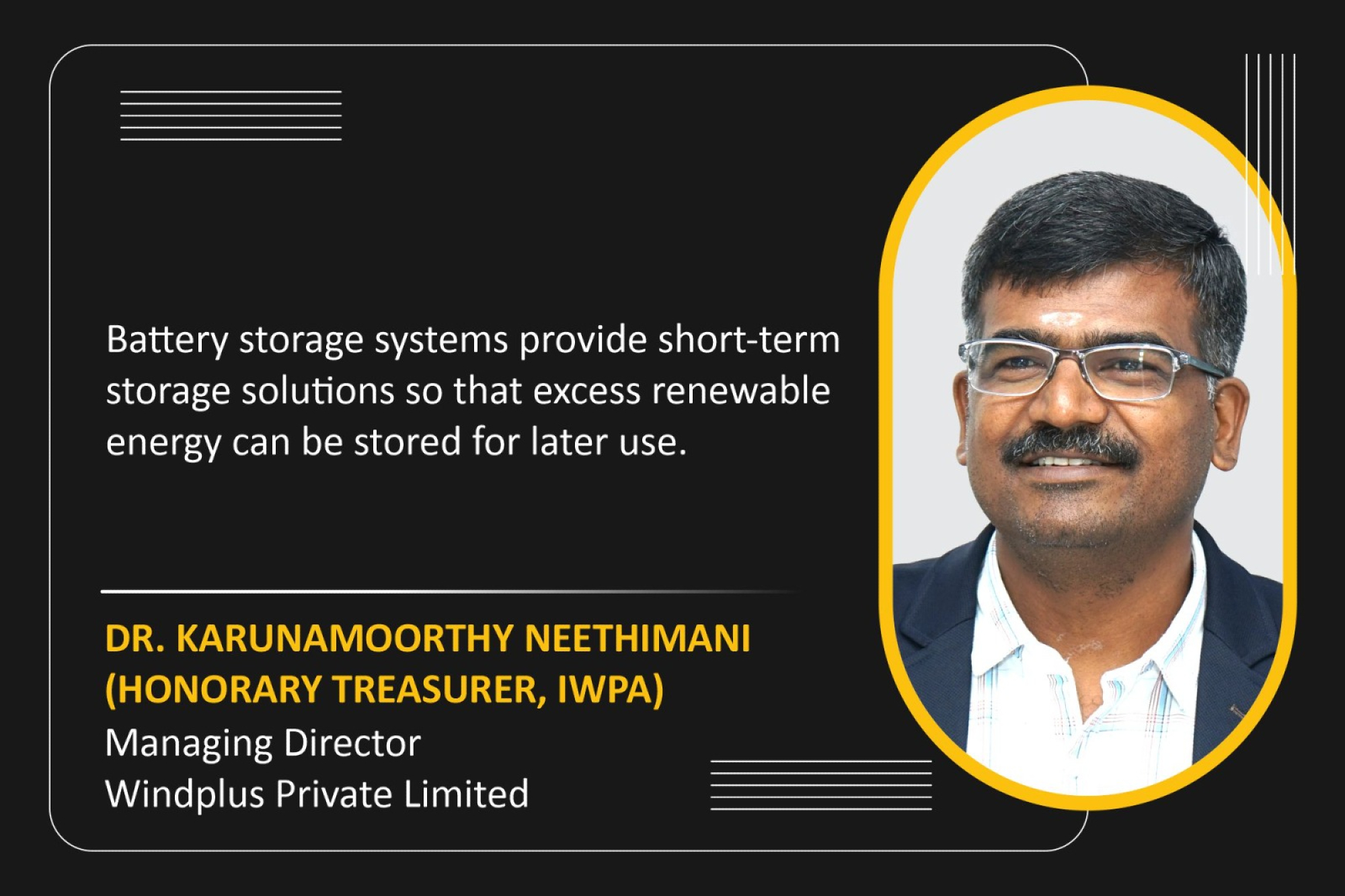Floating offshore turbines enable wind energy capture in previously unreachable areas
By EPR Magazine Editorial November 14, 2024 12:23 pm IST
By EPR Magazine Editorial November 14, 2024 12:23 pm IST

India can increase the share of renewable energy in a balanced energy mix through several strategies, such as connecting areas with renewable resources to areas with high electricity demand, combining different renewable sources to balance out variability in production, and reducing taxes on electric vehicles.
Advancements in grid integration, such as the development of microgrids, facilitate incorporating renewable resources by enabling more flexible and efficient energy flow management. Dr Karunamoorthy Neethimani shares more insights into the industry.
How can India effectively implement a balanced energy mix for sustainability?
Adopting a multi-faceted approach, such as promoting energy efficiency measures in businesses and homes to reduce overall energy demand and implementing a transition programme for coal workers, including new training programmes and new employment opportunities, can provide a smooth transition from coal. It also invests in advanced energy storage technologies to manage the intermittency of renewable resources for a reliable power supply when needed. It also establishes strong policies and incentives for renewable energy, such as carbon pricing, that drive investment in renewable energy and accelerate the transition from coal.
India can also increase the share of renewable energy in a balanced energy mix through several strategies, such as connecting areas with renewable resources to areas with high electricity demand, combining different renewable sources to balance out variability in production, and reducing taxes on electric vehicles. We believe the approaches mentioned above and strategies set the stage for a cleaner and more sustainable future.
How do smart grids and energy storage enhance the reliability of renewable energy systems?
Recent technological advancements, such as smart grids that use sensors, communication technologies, and algorithms for real-time monitoring, enable the dynamic management of energy distribution and facilitate the seamless integration of renewable resources. Demand response systems also play an important role by encouraging customers to adjust their electricity consumption in line with supply fluctuations, effectively balancing and reducing electricity demand pressure on low-generation periods.
Energy storage technologies are also critical in dealing with intermittent issues. Battery storage systems provide short-term storage solutions so that excess renewable energy can be stored for later use, thus providing a stable power supply during periods of low wind. Together, these solutions enhance the reliability and stability of renewable energy systems.Which emerging technologies and global investment trends are shaping the future of wind energy, and how can India leverage these trends for long-term energy growth?
Emerging technologies and investment trends in the wind energy sector are transforming global approaches to renewable power. Innovations in material science are enabling the production of stronger, more recyclable turbine components. At the same time, AI, automation, and big data analytics optimise turbine performance and offer real-time insights into wind patterns and turbine health.
Floating offshore turbine designs allow harnessing wind energy in previously inaccessible areas. Technologies like digital twins are enabling predictive maintenance and cost reduction through virtual simulations. To capitalise on these trends, India should prioritise R&D in turbine technology, encourage green bond issuance to attract investment, develop training programs to upskill workers in these new technologies and build a robust talent pool to support sustainable growth in wind energy.
How has local wind turbine manufacturing impacted India’s energy security and economy?
India has emerged as a hub for wind turbine manufacturing, with leading global and domestic companies such as Suzlon Energy Ltd, Siemens Gamesa Renewable Power Pvt Ltd, and GE India Industrial Pvt Ltd. Energy Security of India. By manufacturing wind turbine components locally, India has reduced its import dependence, ensured a stable supply chain and reduced costs. This approach stimulated employment and economic growth by encouraging innovation in renewable technologies. To continue supporting this growth, India had to simplify the approval process for wind projects, offer long-term contracts to attract investment, provide tax benefits for manufacturers, improve infrastructure, and invest in training programs to help build a skilled workforce. These measures have enhanced energy security and promoted sustainable development in the wind energy sector.
We use cookies to personalize your experience. By continuing to visit this website you agree to our Terms & Conditions, Privacy Policy and Cookie Policy.